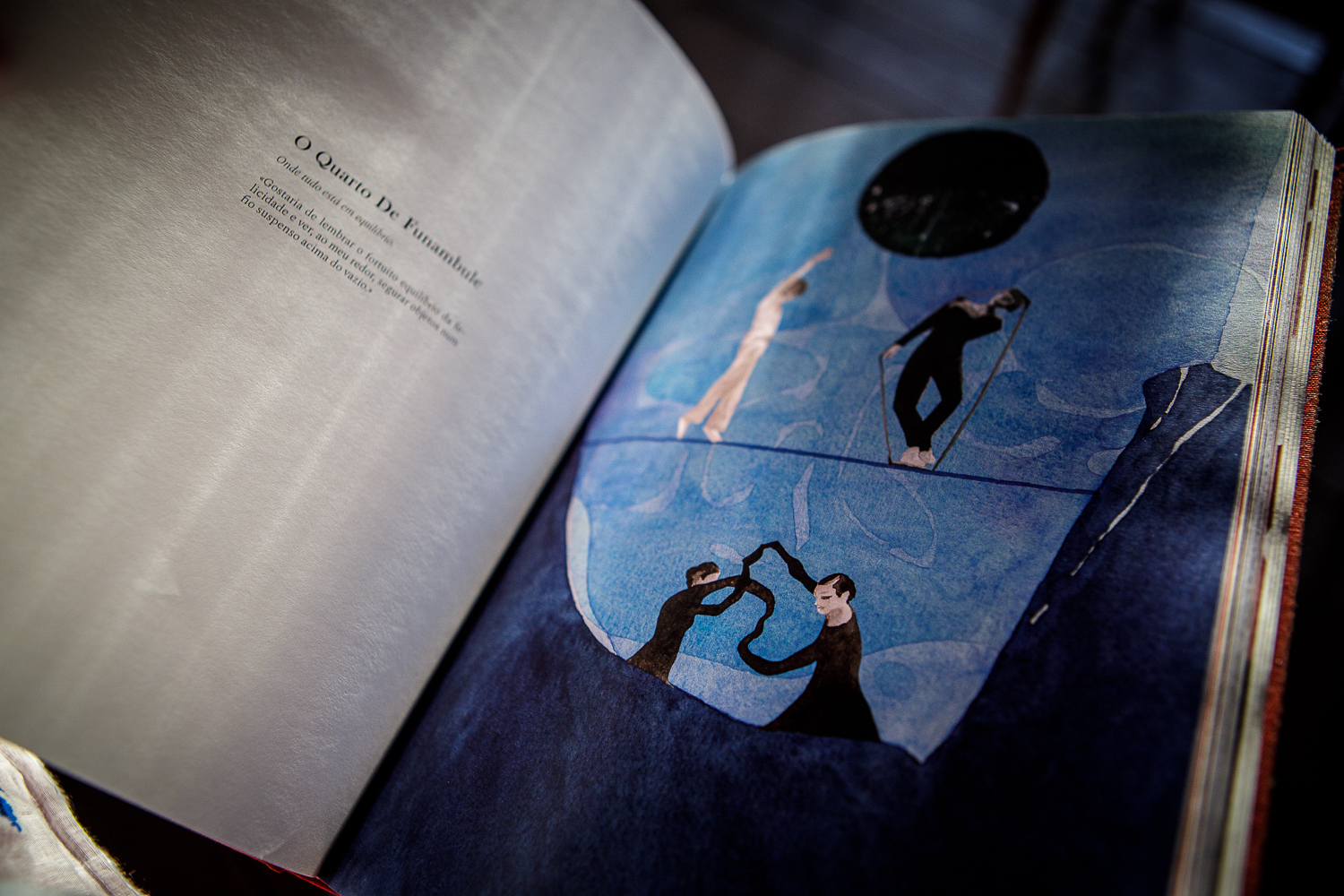Maria and Sergey wander through Palácio to Grilo’s rooms. The evening light makes Maria’s blond hair blonder. Outside, in the garden, the wind sways the vegetation. There is music: French, instrumental, and violins. The couple lets themselves go. There are more than 200 rooms to visit. Slowly they wander through the doors of the unfinished palace and observe every detail.
There are more people in the various spaces of the palace. They walk around, some jump, some scream, and some lie languidly on the floor. Everyone seems to be in another dimension, another time. But they are not. They are in Lisbon. At Palácio do Grilo, in Beato, which opened to the public in June of this year.




Palácio do Grilo was imagined by the 1st Duke of Lafões, Pedro Henrique de Bragança, in the 18th century. The Duke, an illegitimate descendant of Pedro II, imagined “a place that is also not a place and that can allow the soul to take the flight that best suits it”. The words in quotation marks were probably written in a notebook left by the duke and discovered three centuries later by Julien Labrousse, who moved from Paris to Lisbon and bought the palace in 2020.
Now, he has made the dream of the 1st Duke of Lafões come true. He organized the words left by him, got to work, and prepared the palace to welcome visitors, following and adapting the Duke’s wishes expressed in the “inspiring” notebook.
On each page, it is possible to find a description of each of the rooms. “At Grilo I want all the rooms, both in decoration and function, to be set up for us, for us to be languid and dream better than anywhere else in the world,” D. Pedro de Bragança will have written.
Three centuries later, the project has been realized and the atmosphere of this late afternoon at Palácio do Grilo is testimony to it. Virtually untouched since it was built, the whole atmosphere created by the furniture, ambient music, and actors who act in an improvised way (but inspired by the Duke’s words) takes us to another dimension, to dreams, to a live movie, whatever you want.
The goal is that “people can wander, discover and live a little in the realm of the fantastic and the extravagant,” explains Julien Labrousse, “while actors and dancers perform” scattered throughout the various rooms. Scattered throughout the rooms are also tables and chairs where you can taste the restaurant’s menu and the bar’s drinks. There are also rooms in the Palácio do Grilo that will function as artistic residences or can be rented for private events.

It is “in a dimension of the fantastic” that Maria Kozhevnikova and Sergey Zhesterev, the couple from the beginning of this story, are. Living in Lisbon since September 2021, the two young Russians take photos in every room, enjoy the luscious light and observe everything that the Palácio do Grilo has to offer.
“It’s an impressive experience. It’s fascinating how a place like this is in the middle of the city,” says Maria. “I don’t know what parts of the palace have been restored, there is broken glass, and there are rooms that are more cared for. It’s lovely,” praises the young woman.
Palácio do Grilo, a T200 to discover in Beato
Julien and his team prepared the more than 200 rooms of the Palace of Grilo to welcome the public. With only a few new pieces of furniture and decoration, Labrousse’s team wanted the setting to remain faithful to the origins and the era, and so, inside the palace, it’s possible to find sets of mural paintings by Cirilo Wolkmar Machado or tiles from the 18th and 19th centuries, which integrate the thematic rooms of Palácio do Grilo, such as the Academy Room, the Venus Room, or the Chinese Room.
The rectangular-shaped chapel houses a gold-carved panel from the second half of the 18th century. In this room, there will be no performance, “out of respect for the family that used to celebrate mass there,” explains Julien.
The property, which has more than 7000m2, was in the family of the Dukes of Lafões since 1759 until Julien Labrousse bought it in 2020. The last Duke, Afonso Caetano de Bragança, died in 2021 and lived in the palace until it was bought by Julien in 2020.

The Frenchman, an architecture enthusiast, producer, and manager of cultural venues like the Elysée Montmartre and Le Trianon, two Parisian performance halls, already had one investment in Portugal – an eco-hotel in Cabo Espichel. He now adds Palácio do Grilo to his collection, which he sees as a “performing arts museum; something that cities need” and he would like it to be “Lisbon’s visiting card”.
“It’s going very well. There are always little things happening and the public likes it. We’re reading the public and adapting. We have almost always had reservations for dinner time”. He also explains that the weekend is when there are more visitors and that some don’t know what they are going for and get confused.
“Some people just come for a drink and then realize what there is to discover here”. Others come to explore all the nooks and crannies of this noble space and end up having dinner.
More than two hundred rooms undiscovered, of a place that is not a place, it is whatever the visitor wants, a restaurant, a bar, a performance theater, a museum, a time machine, the Palace of Grilo.
Admission is free and the palace is open every day from 11 am to midnight.
You can read this article in Portuguese.

If you like what you’ve seen us doing, if you get inspired by our stories, if you care about a new Lisbon, more engaging and liveable, if you see any use in this journalism, communitarian and close spare a little bit of your time and consider donating. If you want to be part of this community – join us!

